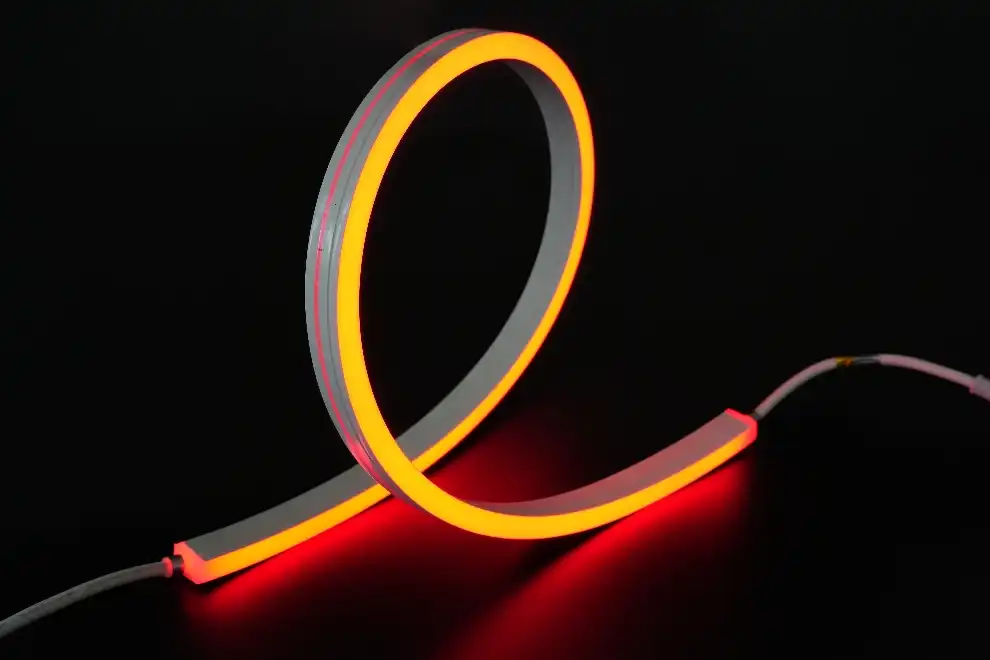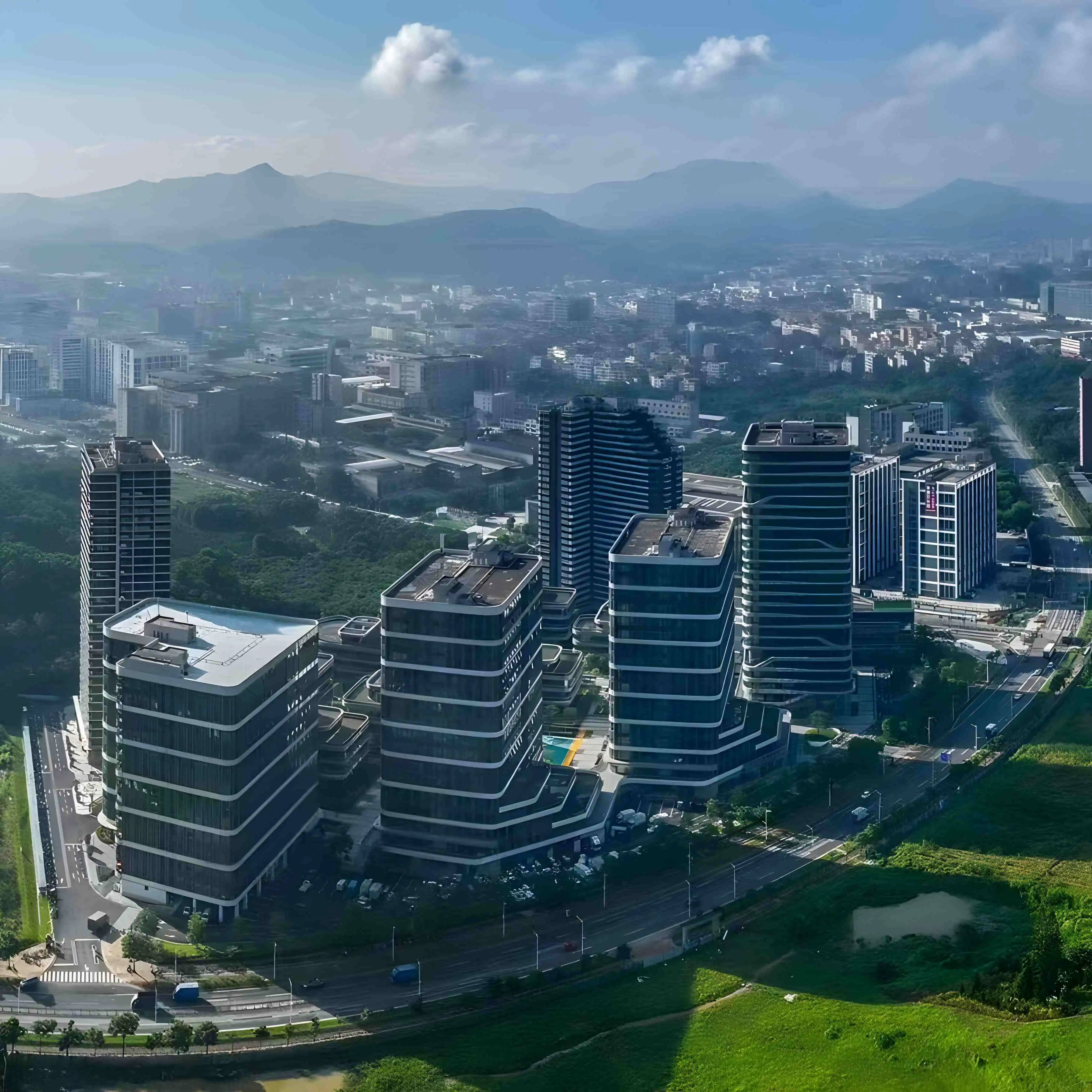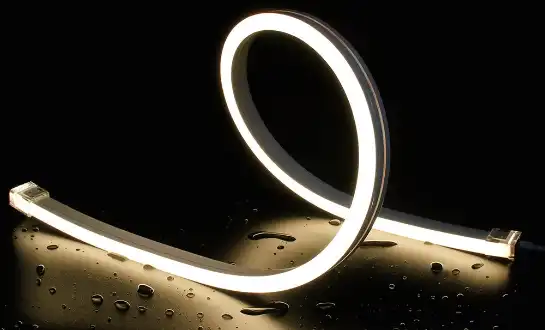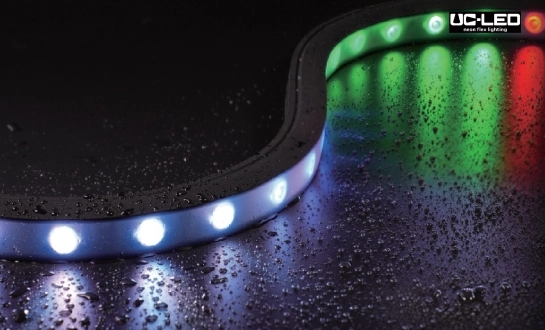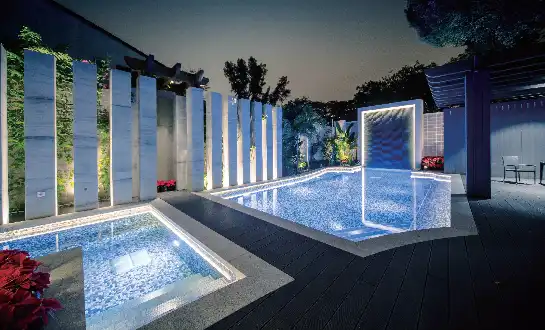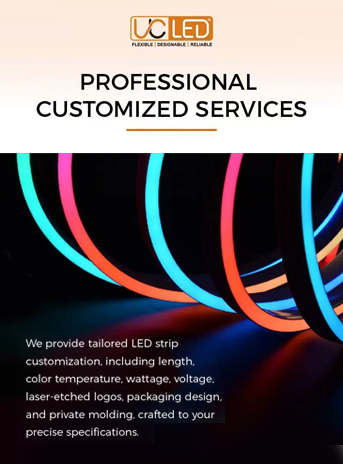Grasping Flexible LED Neon Rope Lights
Flexible LED neon rope lights have revolutionized the lighting industry with their versatility and energy efficiency. These modern lighting solutions mimic the look of traditional neon lights but offer numerous advantages. They consist of a series of LEDs encased in a flexible, translucent PVC or silicone housing, creating a continuous line of light that can be bent and shaped to fit various applications.
Unlike traditional neon lights, LED neon rope lights are more durable, consume less energy, and produce less heat. They're available in a wide range of colors and can be easily customized to fit specific design needs. These lights are commonly used in architectural lighting, signage, decorative displays, and ambient lighting in both indoor and outdoor settings.
Composition and Design
The core of flexible LED neon rope lights consists of a strip of LEDs mounted on a flexible circuit board. This is encased in a soft, bendable tube made of PVC or silicone, which diffuses the light and gives it the characteristic "neon" glow. The outer casing also provides protection against dust and moisture, making these lights suitable for various environments.
Most LED neon rope lights are designed with cut points at regular intervals, typically every few inches or centimeters. These points are where the light can be safely cut without damaging the electrical components. They're usually marked with a symbol or line on the casing, making it easy for users to identify where to make cuts when customizing the length.
Benefits and Applications
The popularity of flexible LED neon rope lights stems from their numerous benefits:
- Energy Efficiency: They consume significantly less power compared to traditional neon lights.
- Longevity: LED lights have a much longer lifespan, often lasting tens of thousands of hours.
- Safety: They operate at lower temperatures and voltages, reducing fire risks and energy costs.
- Flexibility: The ability to bend and shape the lights allows for creative installations and designs.
- Durability: The flexible casing protects the LEDs from impact and environmental factors.
- Customization: They can be cut to specific lengths and are available in various colors and brightness levels.
These lights find applications in a wide range of settings, including:
- Architectural accent lighting
- Signage and advertising displays
- Event and stage decorations
- Retail displays and window dressing
- Bar and restaurant ambiance lighting
- Home decor and mood lighting
Preparing to Cut LED Neon Rope Lights
Before cutting your flexible LED neon rope lights, proper preparation is crucial to ensure safety and maintain the integrity of the lighting system. This process involves several important steps that, when followed correctly, will help you achieve the desired results without damaging the lights or compromising their functionality.
Safety Precautions
Safety should always be your top priority when working with electrical components of flexible LED neon rope lights. Before you begin, take the following precautions:
- Disconnect Power: Ensure the LED neon rope lights are completely unplugged from any power source. Never attempt to cut or modify the lights while they're connected to electricity.
- Work Area: Choose a clean, dry, and well-lit work area. This will help you see clearly and avoid accidents.
- Protective Gear: Wear safety glasses to protect your eyes from any potential debris during cutting.
- Tool Selection: Use the appropriate tools for cutting. Sharp scissors or a utility knife designed for electrical work are recommended.
Measuring and Marking
Accurate measurement is crucial for a successful cut. Follow these steps:
- Plan Your Design: Determine exactly where you want your lights to start and end in your installation.
- Measure Twice: Use a tape measure to carefully measure the length you need. It's always better to measure twice to avoid costly mistakes.
- Locate Cut Points: Identify the designated cut points on your LED neon rope lights. These are usually marked with a symbol or line on the casing.
- Mark the Cut Point: Use a non-permanent marker to clearly mark the exact point where you'll make your cut. Ensure this aligns with the manufacturer's designated cut point.
Gathering Necessary Tools
Having the right tools at hand will make the cutting process smoother and safer. Gather the following items:
- Sharp Scissors or Utility Knife: Ensure they're clean and sharp for a clean cut.
- Electrical Tape: High-quality electrical tape for insulating cut ends if needed.
- Silicone Sealant or End Caps: To seal the cut end and maintain water resistance.
- Connectors: If you plan to rejoin sections or connect to power supplies.
- Multimeter: To test the lights after cutting and before reconnecting to power.
- Clean Cloth: For wiping down the area before and after cutting.
By thoroughly preparing and gathering all necessary tools and materials before you begin, you'll set yourself up for a successful and safe cutting process. Remember, taking your time during the preparation phase can save you from potential issues and ensure the longevity of your flexible LED neon rope lights.
Step-by-Step Guide to Cutting and Connecting
Now that you've prepared your workspace and gathered your tools, it's time to proceed with cutting and connecting your flexible LED neon rope lights. This process requires precision and care to ensure the lights continue to function properly after modification.
Cutting the LED Neon Rope Lights
- Double-Check Measurements: Before making any cuts, verify your measurements one last time.
- Locate the Cut Point: Ensure you're cutting at a designated cut point marked by the manufacturer.
- Make the Cut: Using sharp scissors or a utility knife, make a clean, straight cut through the entire rope light at the marked point. Cut perpendicular to the length of the light for the best results.
- Inspect the Cut: Examine the cut end to ensure no wires are exposed and the cut is clean.
Sealing the Cut End
Proper sealing is crucial to maintain the water-resistant properties of your flexible LED neon rope lights:
- Clean the Cut End: Use a clean, dry cloth to remove any debris from the cut end.
- Apply Sealant: If using silicone sealant, apply a generous amount to the cut end, ensuring complete coverage.
- Attach End Cap: If using an end cap, slide it over the cut end, making sure it's securely in place.
- Allow to Dry: Give the sealant time to dry completely before handling or powering on the lights.
Connecting LED Neon Rope Light Sections
If you need to connect sections of LED neon rope lights, follow these steps:
- Prepare the Ends: Ensure both ends you're connecting are clean and properly cut at designated points.
- Choose the Right Connector: Use a connector compatible with your specific LED neon rope light model.
- Align the Polarity: Most LED neon rope lights have polarity indicators. Ensure these align correctly when connecting.
- Insert the Ends: Carefully insert each end into the connector, making sure they're fully seated.
- Secure the Connection: Many connectors have locking mechanisms or screws. Ensure these are tightened properly.
- Test the Connection: Before final installation, test the connection to ensure proper functionality.
Connecting to Power Supply
When connecting your LED neon rope lights to a power supply:
- Verify Compatibility: Ensure your power supply matches the voltage and current requirements of your LED neon rope lights.
- Use Appropriate Connectors: Many LED neon rope lights come with specific power connectors. Use these for the safest connection.
- Observe Polarity: Connect positive and negative terminals correctly. Incorrect polarity can damage your lights.
- Secure Connections: Ensure all connections are tight and secure to prevent loose connections that could cause flickering or failure.
- Test the Setup: Before final installation, test the entire setup to ensure all sections are lighting up correctly.
Remember, if at any point you're unsure about the process or encounter difficulties, it's best to consult a professional electrician or the manufacturer's support team. Proper cutting and connecting techniques will ensure the longevity and performance of your flexible LED neon rope lights, allowing you to enjoy their vibrant illumination for years to come.
Conclusion
Cutting and connecting flexible LED neon rope lights is a task that requires careful planning, precise execution, and attention to safety. By following the steps outlined in this guide, you can customize your lighting to fit your specific needs while maintaining the integrity and functionality of the lights.
Remember, the key points to success include: always cutting at designated points, properly sealing cut ends, ensuring correct polarity when connecting, and using compatible connectors and power supplies. Taking the time to measure accurately and prepare your workspace can save you from costly mistakes and ensure a smooth installation process.
While DIY customization can be rewarding, it's important to recognize when a project might be beyond your skill level. For complex installations or if you're unsure about any step in the process, don't hesitate to seek professional assistance. This can help prevent damage to your LED neon rope lights and ensure they meet safety standards.
With proper care and installation, flexible LED neon rope lights can provide stunning, energy-efficient illumination for a wide range of applications, from home decor to commercial signage. Their versatility, combined with the ability to customize, makes them an excellent choice for creative lighting solutions.
FAQ
Can all flexible LED neon rope lights be cut?
While many flexible LED neon rope lights are designed to be cut, not all can be. Always check the manufacturer's specifications before cutting.
How often can I cut LED neon rope lights?
Most LED neon rope lights have designated cut points at regular intervals, typically every few inches or centimeters. Only cut at these marked points.
Do I need special tools to cut LED neon rope lights?
Sharp scissors or a utility knife designed for electrical work are usually sufficient. Ensure your tools are clean and in good condition.
Can I reconnect cut sections of LED neon rope lights?
Yes, with the appropriate connectors, you can usually reconnect cut sections. Always ensure proper polarity when reconnecting.
Expert LED Lighting Solutions | QUAN HE
At QUAN HE Lighting Co., Ltd., we specialize in premium linear lighting products, including flexible LED neon rope lights. Our state-of-the-art 5,000m² factory and expert R&D team ensure top-quality, innovative lighting solutions. We offer comprehensive OEM and ODM services, providing tailored solutions for your unique lighting needs. Trust our decade-long expertise and ISO-certified manufacturing processes for all your LED lighting projects. Contact us at Linda@uc-led.com for professional guidance and superior LED products.
References
1. Johnson, L. (2022). "The Complete Guide to LED Neon Flex: Installation and Maintenance." Lighting Design Quarterly, 45(3), 78-92.
2. Smith, R. & Brown, T. (2021). "Energy Efficiency in Modern Lighting: A Focus on Flexible LED Solutions." Journal of Sustainable Lighting, 16(2), 112-128.
3. Chen, Y. (2023). "Advancements in Flexible LED Technology: From Manufacturing to Application." International Journal of Optoelectronics, 8(4), 301-315.
4. Davis, M. (2022). "Safety Considerations in DIY Lighting Installations." Electrical Safety Magazine, 33(1), 45-52.
5. Wilson, E. (2023). "The Rise of Customizable Lighting: Market Trends and Consumer Preferences." Illumination Industry Report, 12(2), 67-83.
